Remember the Maine:
Reinforced Fleets
by Mike Bennighof, Ph.D.
February 2024
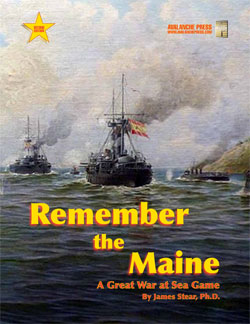 In the decade before the Spanish-American War, both participants made halting attempts to increase their naval strength. With many members of the United States Congress unwilling to become involved in overseas conflicts, the initial investment in the “New Steel Navy” would be limited to small ships suitable for coastal defense. In Spain, continual financial crises and government upheavals made it impossible to carry through a planned naval renewal. In the decade before the Spanish-American War, both participants made halting attempts to increase their naval strength. With many members of the United States Congress unwilling to become involved in overseas conflicts, the initial investment in the “New Steel Navy” would be limited to small ships suitable for coastal defense. In Spain, continual financial crises and government upheavals made it impossible to carry through a planned naval renewal.
Both nations had plans for new warships in the years before the Spanish-American War, that could easily have been ready in time to see action. And so we included them in Great War at Sea: Remember the Maine.
The Hichborn Battleship
The U.S. Navy ordered its first battleships in 1890, the three “coastal battleships” of the Indiana class. With their low freeboard, they were not suitable for service outside American waters, and that’s just how many members of Congress wanted it. A fleet able to project power around the globe would tempt future American administrations to become involved in foreign entanglements.
But many within the Navy wanted seagoing battleships, not the enlarged monitors of the Indiana class. The Navy’s chief constructor, Philip Hichborn, sketched a ship in 1892 that followed the most recent French practice. At 11,000 tons, she would displace slightly more than Indiana, but would be longer (387 feet for the new ship, compared to 350 feet for Indiana) with the same beam (69 feet). She supposedly would draw 24 feet of water, the same as Indiana, but Indiana failed miserably on this score, actually drawing 27 feet which submerged her armored belt and made her very sluggish with a full load of coal and ammunition.
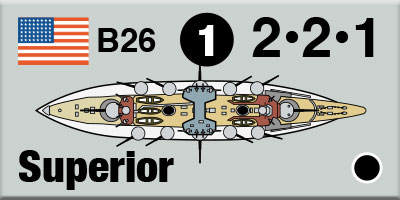
She would be fast by the standards of 1892, making 17 knots compared to 15 knots for Indiana. Her hull would have considerable tumblehome (an inward curve), like contemporary French battleships, and a bewildering array of weapons, also like contemporary French battleships. A single 12-inch gun would be carried fore and aft, mounted in turrets, with a 10-inch gun on either beam, also mounted in turrets. Three more turrets on either beam held 6-inch guns, with two more 6-inch guns in single casemate mounts under the bridge. Eight 4-inch guns, four each in shield mounts and casemates, plus light guns ranging from 6-pounder (57mm) on down to Gatling guns for defense against enemy torpedo boats.
The Hichborn battleship might have been authorized, had President Benjamin Harrison been re-elected in 1892. But Grover Cleveland returned to office and appointed the virulent racist Hilary Herbert of Alabama as Secretary of the Navy. Herbert, when in Congress, had favored a Navy oriented to coastal defense and opposed funding for paleontology research. Herbert scotched the new battleship design. He later came around to the idea of a powerful sea-going fleet, but never accepted dinosaurs as anything but an unholy fraud.
That probably was a stroke of luck for the U.S. Navy (if not for science); the French models for Hichborn’s battleship turned out to be unstable failures. Spotters could not easily distinguish the fall of shot from the two calibers of the mixed main battery, and the ships’ design frustrated efforts to modernize them to correct those flaws.
There are two examples of the Hichborn battleship included in Remember the Maine, assumed to have been ordered in 1893 and commissioned in 1897. They probably would have carried state names like other battleships (though the Navy broke that pattern with Kearsarge of the following class), but those names are already in use for battleships that actually existed so we named them Superior and Erie.
A Sister for El Solitario
Spain ordered her first battleship in 1884, from France’s La Seyne shipyard. Pelayo would be a close copy of the French Marceau, considered the epitome of battleship design at the time. She carried a pair of 320mm (12.6-inch) guns in single barbette mounts fire and aft, and another pair of 280mm (11-inch) guns, also in barbette mounts, one on either beam. The barbette provided an armored bulwark around the gun to protect the crew from direct fire, with the gun firing over the top of the barbette. The barbette did not rotate; the gun did so on a turntable.
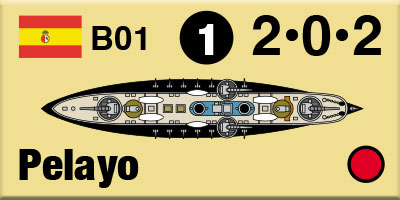
Pelayo could make 17 knots when new, and though she had thick armor (with a belt of 17 inches), this was of Creusot steel that would rapidly be overtaken by new types of armor that offered much better protection with much less thickness (and therefore weight). With all of that steel weighing down the ship, she had relatively short legs and was considered unsuited for overseas service.
As the Armada’s only battleship, Pelayo carried the nickname “El Solitario” in the Spanish fleet. She was to have received a sister, cancelled in 1890 in favor of more armored cruisers that could patrol and defend Spain’s colonial empire. Pelayo herself returned to La Seyne in 1897 to have some of her armor removed and replaced by more effective plating, and her light guns replaced with modern weapons. The old guns had been removed but the new ones not yet fitted when she was rushed back into service for the Spanish-American War.
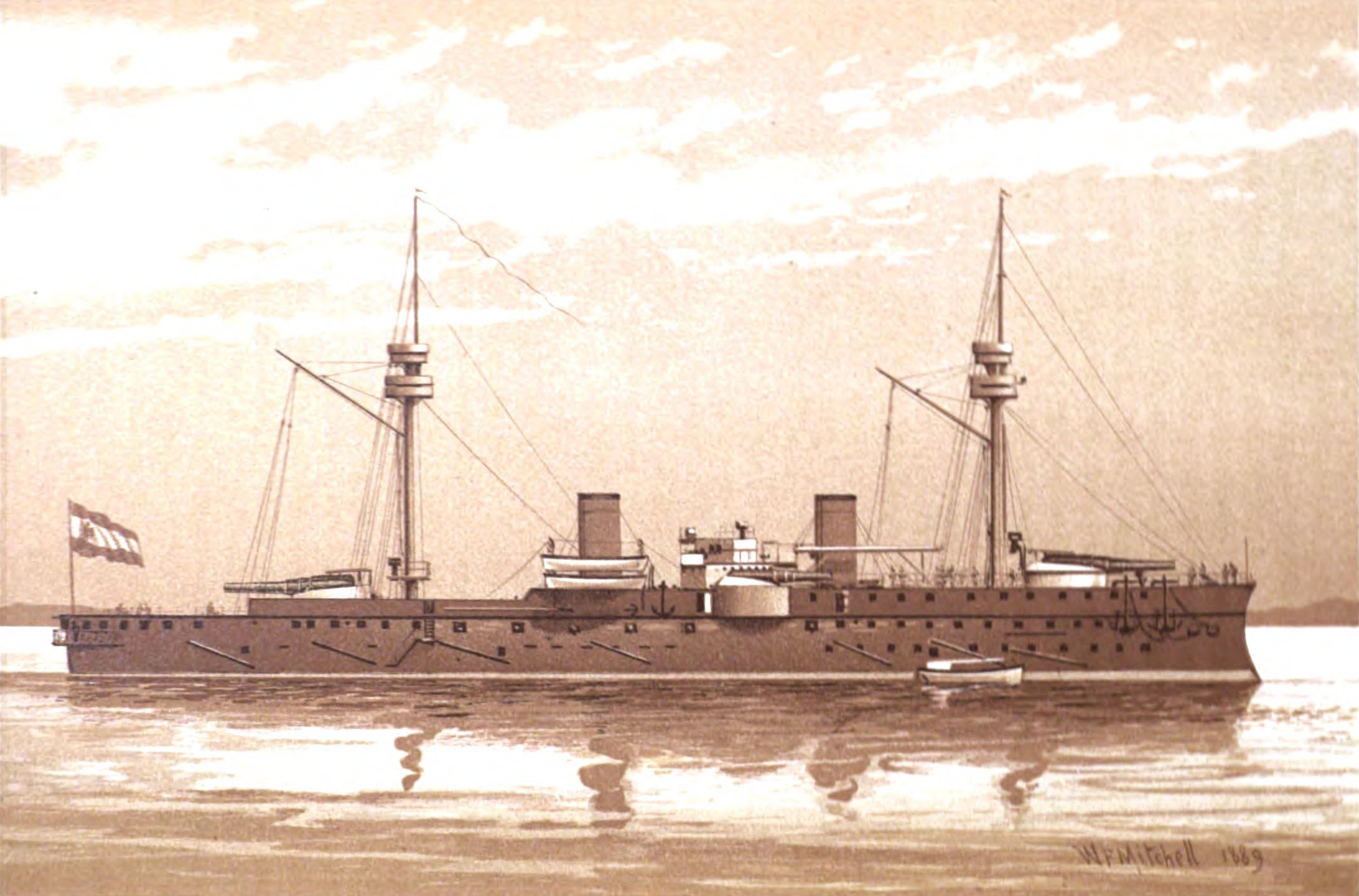
El Solitario as she appeared in 1889.
Pelayo was not as good a fighting ship as the American battleships, themselves not all that effective for their time. But she had more than enough capability to shred the ancient monitors defending American ports.
We included the cancelled sister in Remember the Maine, under the name Ramiro.
The New Armored Cruisers
Rather than order more battleships abroad, the Armada turned to the Bilbao Naval Shipyard for the Infanta Maria Teresa class of three armored cruisers, ordered in 1888, laid down in 1889 and commissioned between 1893 and 1895. Three improved versions, the Princesa de Asturias class, were ordered in 1889 from three other naval dockyards.

The major change from the previous class was the replacement of the obsolescent, barbette-mounted 280mm main guns of Infanta Maria Teresa with modern, turret-mounted, and electrically-powered 240mm guns. And that became a problem: Carraca Arsenal, the manufacturer, delivered the guns so slowly that the cruisers took more than a decade to complete and therefore did not participate in the Spanish-American War.

The Armada also purchased a new armored cruiser, Cristóbal Colón, while under construction for the Royal Italian Navy as Giuseppe Garibaldi. The Spanish rejected her original armament in favor of their new 240mm guns, but these had not been delivered when war broke out and she sailed to her doom without her main armament. A second ship, Pedro de Aragon, was to have been ordered from the Ansaldo shipyard as well, but was cancelled after the Spanish-American War. That also did away with plans to order two more cruisers to the same design.
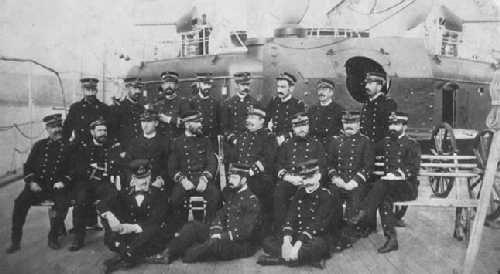
Officers of Cristóbal Colón pose in front of her empty forward turret.
Remember the Maine includes the three cruisers of the Princesa de Asturias class, as they would have been ready for battle had Carraca Arsenal gotten its act together, and the three sister ships of Cristóbal Colón. With all eleven of her projected armored cruisers, Spain becomes the formidable opponent most European observers expected on the eve of the Spanish-American War.
You can order Remember the Maine (Second Edition) right here.
Please allow an additional two weeks for delivery.
Sign up for our newsletter right here. Your info will never be sold or transferred; we'll just use it to update you on new games and new offers.
Mike Bennighof is president of Avalanche Press and holds a doctorate in history from Emory University. A Fulbright Scholar and NASA Journalist in Space finalist, he has published a great many books, games and articles on historical subjects; people are saying that some of them are actually good.
He lives in Birmingham, Alabama with his wife, three children, and his new puppy. His Iron Dog, Leopold, could swim very well.
Want to keep Daily Content free of third-party ads? You can send us some love (and cash) through this link right here.
|
